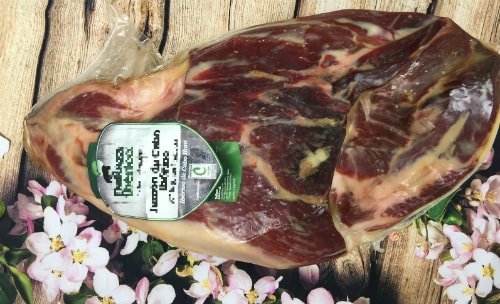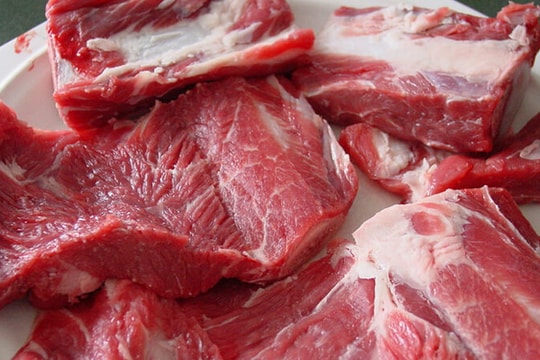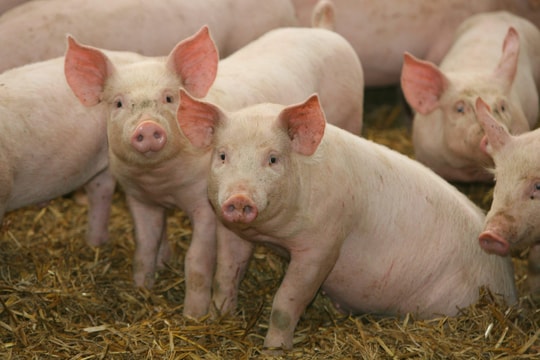Rich Vietnamese 'hunt' for salted pork for nearly 700,000 VND per tael
Each 100 gram slice of premium salted pork costs nearly 700,000 VND but is still sought after by the rich.
Unlike the usual Jamon or Ham sold in supermarkets, recently, many wealthy customers in Vietnam are looking to buy this type of salted meat that costs nearly 700,000 VND per 100 gram slice. Even families with large villas are willing to spend nearly ten million VND to buy a salted ham leg to keep.
“This meat is the Spanish Jamon Iberico. In Vietnam now, many villas with bars or wine cellars want to have a ham hanging on a rack to eat gradually, which is considered a classy and quality way to enjoy it,” said Mr. Quang, a businessman specializing in imported high-end foods.
Currently, a ham leg aged for 24 months costs about 1.8 million to 2.5 million VND per kg, depending on the front or back leg. The leg aged for 36 months costs from 2.2 million to 3.8 million VND per kg for the whole leg. The boneless leg is even more expensive. In addition, to serve those with low demand or to try it, the market also has a 100 gram thin cut packaged in Spain priced from 450,000 to 680,000 VND.
 |
A 100 gram slice of packaged salted pork costs from 450,000 to 680,000 VND. |
According to a survey, there are only about 2-3 importers supplying the entire market. Of which, the largest importer only brings in a maximum of a few hundred pork legs per month because the supply from Spain is quite limited. The rarity combined with the deliciousness also contributes to stimulating demand for this product.
Imports are small, so sales channels are quite limited. This type of salted meat is currently only sold in Western-style restaurants, online and directly to consumers for regular customers. In the supermarket system, 2 units specializing in selling high-end products, An Nam Gourmet and Dinh Phong, provide it.
“It is only sold in famous bars in some big cities in the world. Only when a customer orders, the seller starts cutting the meat from the ham, which is placed horizontally on a separate shelf. There are restaurants in Spain where only one employee is trained to cut the thin slices of meat above,” chef Thanh Tung, also known as Tung Xich Lo, said about the rarity of this type of salted meat not only in Vietnam but also in the world.
Although both rare and expensive, the business situation of this product is quite good. According to Ms. Dao Thi Ha Vy - CEO of Gourmetfood, due to the increase in urban income, many types of food considered the most premium in the world are now appearing and being welcomed in Vietnam.
“Vietnam is a very open consumer market, keen to explore new and unique things in the world. Therefore, high-end products such as Australian abalone, Iberico pork, Japanese beef, foie gras, Iberico jambon, caviar… will have an increasingly large position thanks to the income of the majority of urban people, which has increased significantly in the past 5 years,” Ms. Vy commented.
In Europe, Iberico ham costs between 500 and 1,500 euros per kilogram. The price is high because of the elaborate way of raising and processing the pig. This type of pig must spend at least 4 months free-range in oak forests, finding its own acorns and natural vegetables. During this time, it must gain at least 40 kg compared to the beginning and be 12 months old before it is ready to be salted.
The ham is marinated in sea salt for about 2 to 3 weeks, then the salt layer on the outside is washed off and kept at a temperature of 3-6 degrees Celsius to allow the salt to penetrate deep inside. The ham is then hung up to ferment naturally, ripen and dry in a cool room for 6-9 months. Finally, it is aged for 24 months (Iberico CEBO) to 36 months (Iberico Bolleta), at a temperature of 10-20 degrees Celsius before being packaged and sold.
According to VNE
| RELATED NEWS |
|---|



